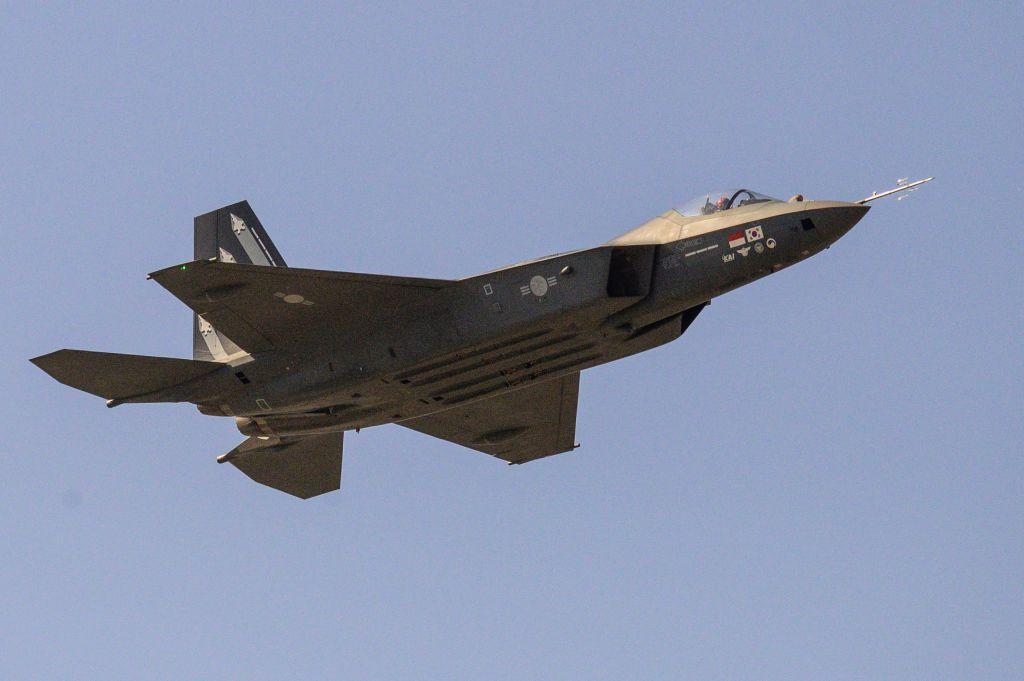
South Korea’s biennial national air show kicks off Oct. 17 to mark an extraordinary two years in the evolution of the national defense industry.
Since the last Seoul ADEX event ended in October 2021, South Korea’s aerospace and defense suppliers have:
- Flown the indigenous, 4.5-generation KF-21 Boramae fighter.
- Approved production of the RQ-105K medium-altitude uncrewed aircraft system (UAS).
- Launched development with the United Arab Emirates of a new military cargo aircraft.
- Exported more $17.3 billion worth of arms in 2022 alone.
Indeed, Seoul ADEX organizers are calling the event a showcase for a defense industry that aims to eclipse China as the world’s fourth largest arms exporter in a few years, rising from ninth place on the Stockholm International Peace Research Institute’s yearly tracker.
South Korea plans to spend 17.8 trillion won ($13.2 billion) on new defense capabilities for the Ministry of National Defense in 2024, a 4.5% increase over the previous year.
Foreign companies attending ADEX will be looking for updates on ongoing acquisition programs for tactical transports and heavy-lift helicopters.
The domestic industry—led by Korea Aerospace Industries (KAI), Korean Air Aerospace Div., Hanwha Aerospace and LiG Next 1—will be showing off concepts for locally sourced requirements, including a new electronic warfare aircraft, several types of uncrewed aircraft systems, surface-to-air missile systems, long-range missiles, and a recently authorized space launch and surveillance system.
Since the country’s annual spending on military acquisition is split between imported equipment and the national defense industry, the domestic acquisition budget is now dwarfed by the $17.3 billion export result in 2022.
South Korea’s patience in the tactical aviation market is finally starting to pay off. KAI and Lockheed Martin teamed in the 1990s to develop the T-50 Golden Eagle, sensing an opportunity to replace the U.S. Air Force fleet of more than 400 Northrop T-38C trainers. The U.S. operator selected the Boeing T-7A instead, but the Korean lead-in fighter trainer is gaining traction. An order by Poland for 48 F/A-50s last year added a fourth export customer for the type. Another order from Malaysia in February added a fifth.
The star of the show, however, will be the KF-21. South Korea plans to be flying 120 of the twin-engine fighters by 2032. The program is advancing through a four-year flight-test program. So far, all six prototypes have entered flight testing within 14 months of the first flight last year. KAI’s test pilots have completed the first missile-firing test and the type’s first supersonic flight.
South Korea’s aerospace industry has reached maturity at a favorable moment for arms exports. The glut of weapons being shipped to Ukraine has put many U.S. and European systems on back order. A new war by Israel against Hamas could tie up the capacity and labor force of the Israeli arms industry indefinitely. South Korea now represents one of the few countries owning a domestic defense industry capable of producing advanced weapon systems at scale.
But South Korea also faces constraints. The country is quickly re-arming to fulfill a triple-axis strategy to counter North Korea’s nuclear threat with conventional capabilities, including building up a pre-emptive strike complex and national air and missile defense system, and deploying a self-reliant ability to massively retaliate in the event of a nuclear strike. The domestic industry may struggle to support both rising domestic and foreign demands at the same time. South Korean companies also still rely on Western suppliers for many key components and major systems such as fighter engines.
This year’s version of ADEX offers a platform for measuring how far South Korea’s industry has progressed in two years. The event also may offer a glimpse of how far the industry can still grow before the next air show in Seoul in 2025.





